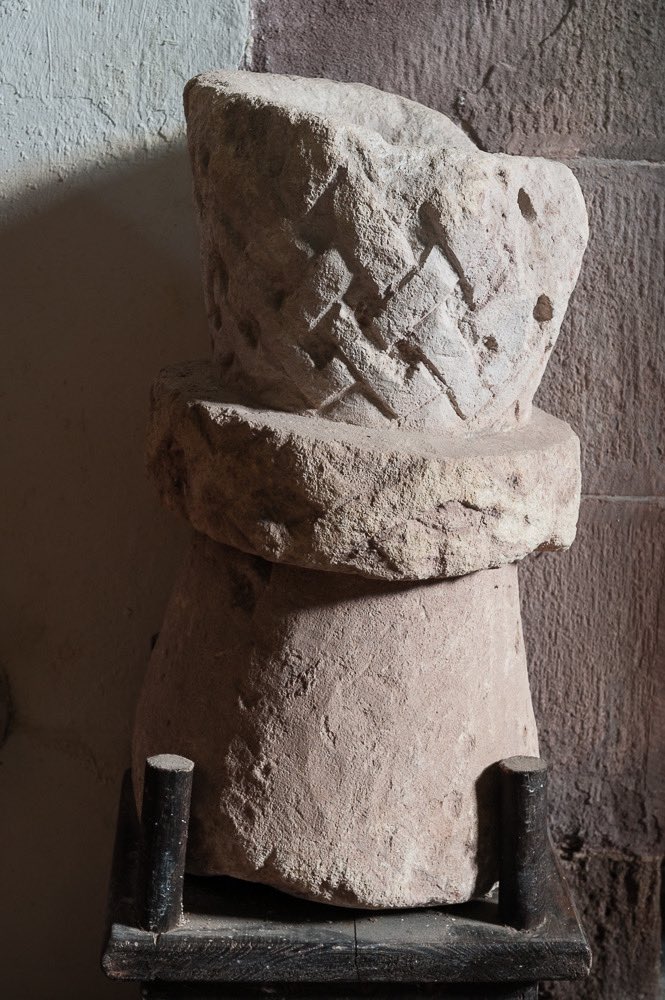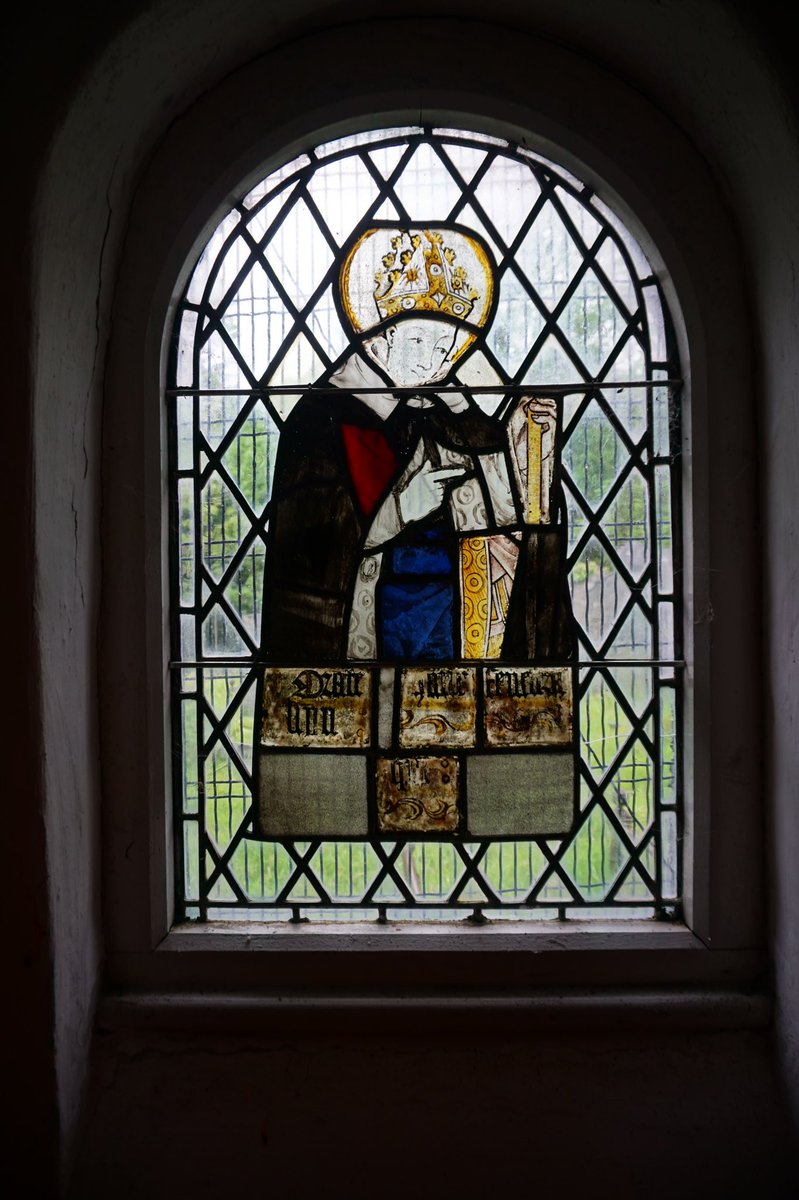
During the Victorian rebuilding of St Jerome's, Llangwm Uchaf, Monmouthshire, builders discovered this intriguing object built into the fabric of the church — an hourglass-shaped stone decorated with a ribbon-plait design and with its top surface hollowed out into a bowl. 

At some point in its history it was used as a stoup. However, the hole cut into the bowl for that use was clearly added to it later. Other theories for its original use have included a baluster shaft and a pillar-piscina.
But in fact it was most likely to have been a stone lamp!
But in fact it was most likely to have been a stone lamp!
Some stone lamps were filled with animal fat or beeswax, and a wick inserted, like a candle. But this one shows no signs of burning/blackening so it probably held a pottery lamp inside it.
Other examples of stone lamps around the UK date from the late Saxon to medieval periods. Some of them were dangerously top-heavy, but this design flaw seems to have been resolved over time, with a wider base.
Llangwm's lamp is almost symmetrical in shape from top to bottom, which would have made it very stable. 

Although the oolitic limestone it's formed from isn't local, the decoration is very characteristic of Pembrokeshire and Glamorganshire from the late 11th to early 12th century. 

Small versions of stone lamps were used in homes, but the much larger size of Llangwm Uchaf's lamp suggests that it was used in a monastery that pre-dates the church.
So, some nine hundred years ago, monks might have worked, broken bread, studied or prayed by its soft light.
So, some nine hundred years ago, monks might have worked, broken bread, studied or prayed by its soft light.
The medieval stone lamp now stands unobtrusively in a corner of Llangwm Uchaf's ancient church.
You can learn more about this even more ancient artefact in *Medieval Archaeology*: archaeologydataservice.ac.uk/archiveDS/arch…
You can learn more about this even more ancient artefact in *Medieval Archaeology*: archaeologydataservice.ac.uk/archiveDS/arch…

• • •
Missing some Tweet in this thread? You can try to
force a refresh





















